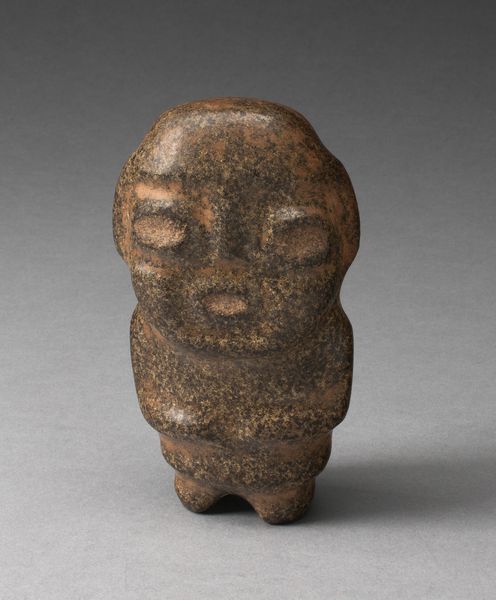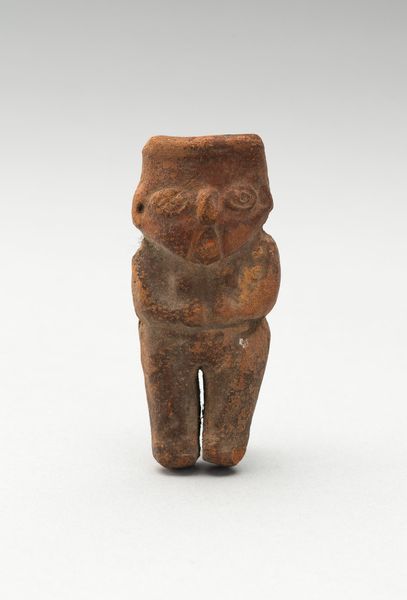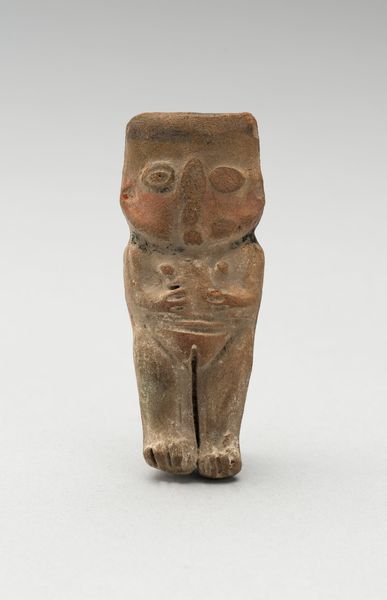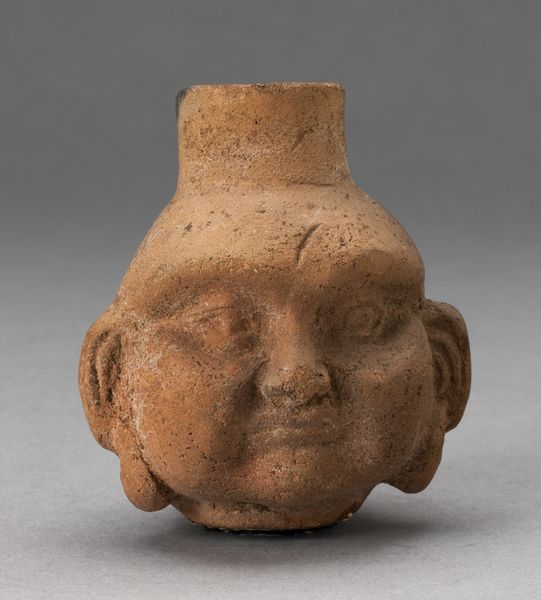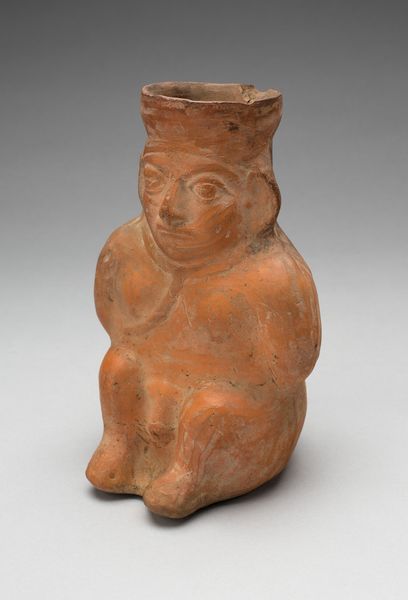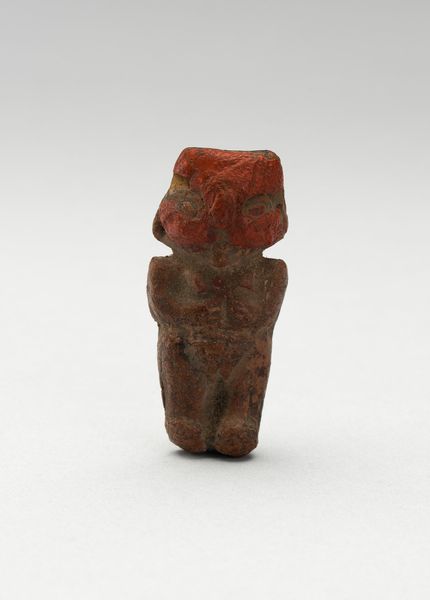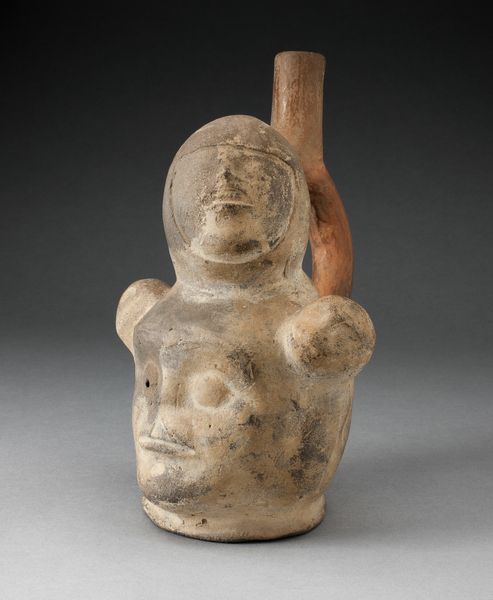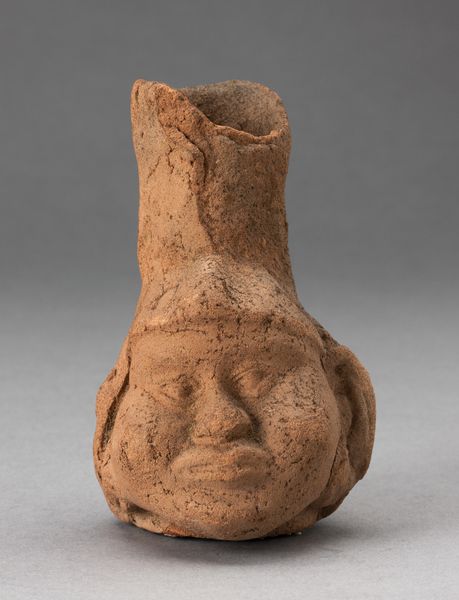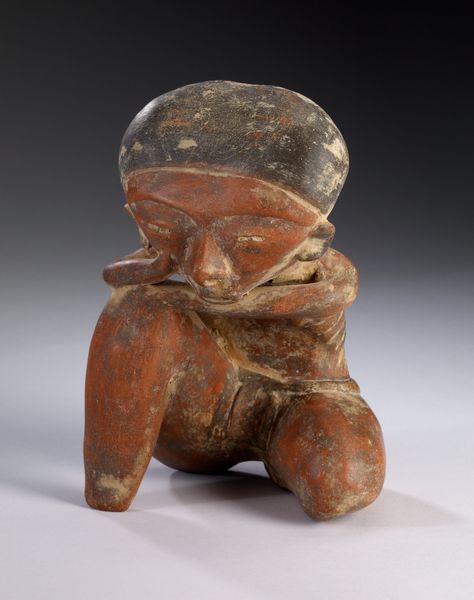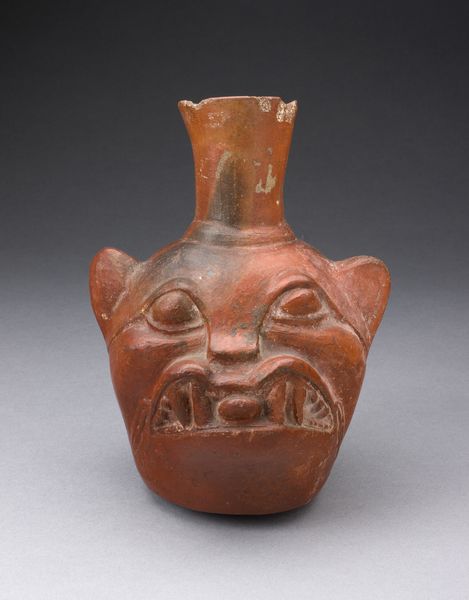
ceramic, sculpture
#
portrait
#
ceramic
#
indigenism
#
figuration
#
ancient-mediterranean
#
sculpture
Dimensions: 11.1 × 3.3 cm (4 3/8 × 1 15/16 in.)
Copyright: Public Domain
Editor: This small ceramic sculpture, *Mold-Made Female Figurine*, dates from around 100-600 CE and was crafted by the Moche culture. There's a solemn feeling about this portrait. How would you interpret it, looking at it from your perspective? Curator: I think it's essential to consider this figurine within the larger social context of the Moche civilization. This piece's existence points to established social hierarchies and the use of art to reinforce those systems, doesn't it? Editor: That makes sense. How would a mold impact how widely available something like this could be? Curator: Precisely! Mass production suggests that its purpose may extend beyond mere personal devotion. It also prompts questions about gender roles, power dynamics and who controlled image production in Moche society. What impact might controlled replication have? Editor: Maybe it democratized access to some representation of power but simultaneously reinforced whatever social narratives it presented. So, looking at this one, the female figure is clearly presented frontally with her hands on her stomach. Would that represent something significant, too? Curator: Exactly! Her stance and presentation hint at the multifaceted roles women had in that culture. Her presentation isn't passive, right? How does it communicate her agency, and what social conditions granted women such visibility? Also, where was this likely displayed, and who was supposed to see it? Editor: This piece is so small; perhaps it could've been a personal object, used as a representation of empowerment. I see how this unassuming figurine holds many cultural and political narratives worth exploring. Curator: Indeed. It reminds us that art is not made in a vacuum but within a network of social relations and political agendas, rewarding a more profound reading.
Comments
No comments
Be the first to comment and join the conversation on the ultimate creative platform.

